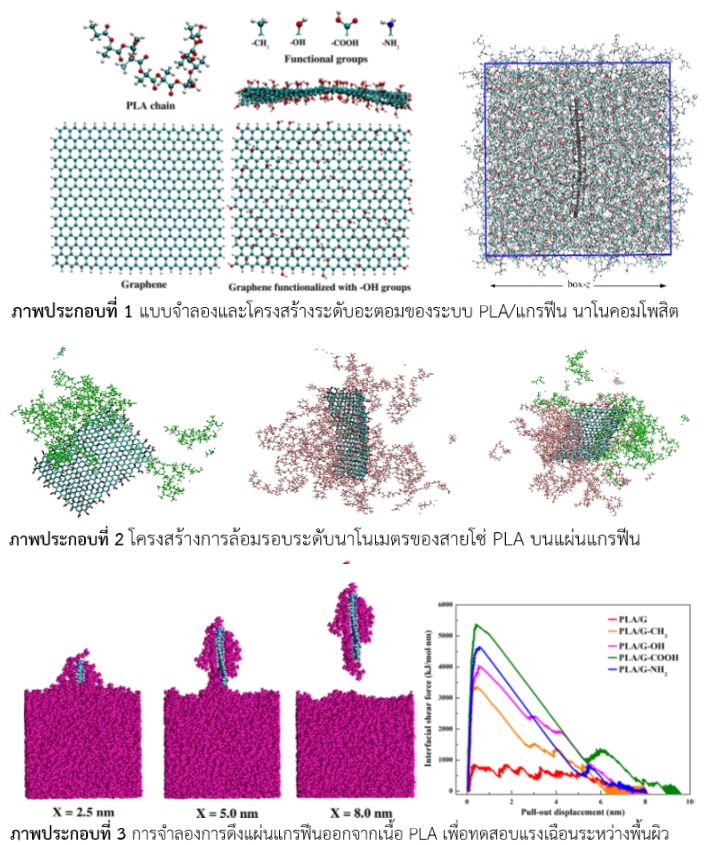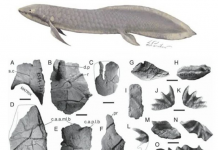Asst. Prof. Khongvit Prasitnok, a researcher from the Faculty of Science, MSU used molecular modeling and simulation to study and design new polymer nanocomposite materials.
Molecular simulation is a field of study that uses high-performance computers to find and predict the properties of new materials without the need to actually synthesize or prepare them. This is another way to reduce the cost of trial and error research. Molecular simulations visualize the microscopic behaviour of the system, which is the key to affecting the macroscopic properties that a material exhibits. Molecular simulations can therefore be used to explain in-depth experimental results.
This simulation studied graphene functionalized with methyl (-CH3), hydroxyl (-OH), carboxyl (-COOH), and amine (-NH2) groups as potential nanofillers for polylactide (PLA) biodegradable polymers. Key properties including the structure and dynamics of polymer chains, interaction energy and interfacial shear force between the polymer matrix and the filler, and glass transition temperature (Tg) of the nanocomposites were investigated. Results indicated that graphene functional groups play important roles in the interfacial bonding characteristics between polymer matrix and the filler. Among the fillers studied, graphene modified by -COOH groups provided the strongest enhancement of interfacial interaction and shear force between the PLA matrix and the filler. The presence of nanofillers resulted in a moderate shift of the composite Tg compared to the unfilled polymer. The system with stronger interfacial interaction possessed higher Tg due to lower mobility of chain segments induced by the interaction strength between the polymer and the filler.

Prasitnok, K., In-noi, O. (2020). Functionalized graphenes as nanofillers for polylactide: Molecular dynamics simulation study. Polymer Composites, 41(1), 294-305. https://doi.org/10.1002/pc.25369






